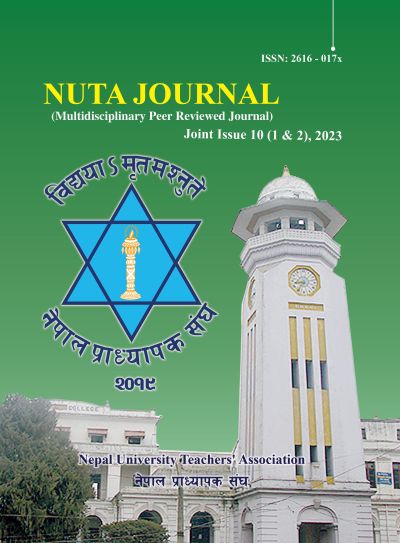The Rivalry between India and China for Political Influence in Nepal
DOI:
https://doi.org/10.3126/nutaj.v10i1-2.63043Keywords:
Belt and road initiative, China, democracy, India, instability, intrests, Nepal, rivalryAbstract
Nepal is geographically situated between India and China's economically prosperous and politically influential nations. As a result, the interests of Nepal's neighbouring countries have influenced its political landscape. Thus, the paper attempts to analyse how India and China destabilise democracy in Nepal by relating historical, political, economic, and cultural factors because they are connected. Furthermore, it examines how India and China have affected Nepal's democracy through the political parties, the government, and the Constitution. China and India have a geostrategic rivalry, and then they engage in Nepal to create political polarisation, which weakens democratic institutions. It fuels instability in Nepal because it has cultural and political ties and generates more government instability. Therefore, research explores the complex connection of Nepal with China and India and their impact on democratic stability. The study concludes that Nepal's government, civil society, and regional actors should mitigate the adverse effects of external political intervention and foster a stable democratic environment in Nepal. This study used a qualitative technique, incorporating a literature review and document analysis, to examine reports, policy documents, and media items. The analysis of thematically gathered data reveals discernible patterns and trends in the influence of China and India on the volatility of Nepal's democratic system.
Downloads
Downloads
Published
How to Cite
Issue
Section
License
© Copyright by NUTA JOURNAL
All Rights Reserved. No part of this Journal may be reproduced in any form or by any electronic or mechanical means, including information storage and retrieval system without prior permission in writing from the publisher, except by a reviewer who may quote brief extracts while reviewing.

